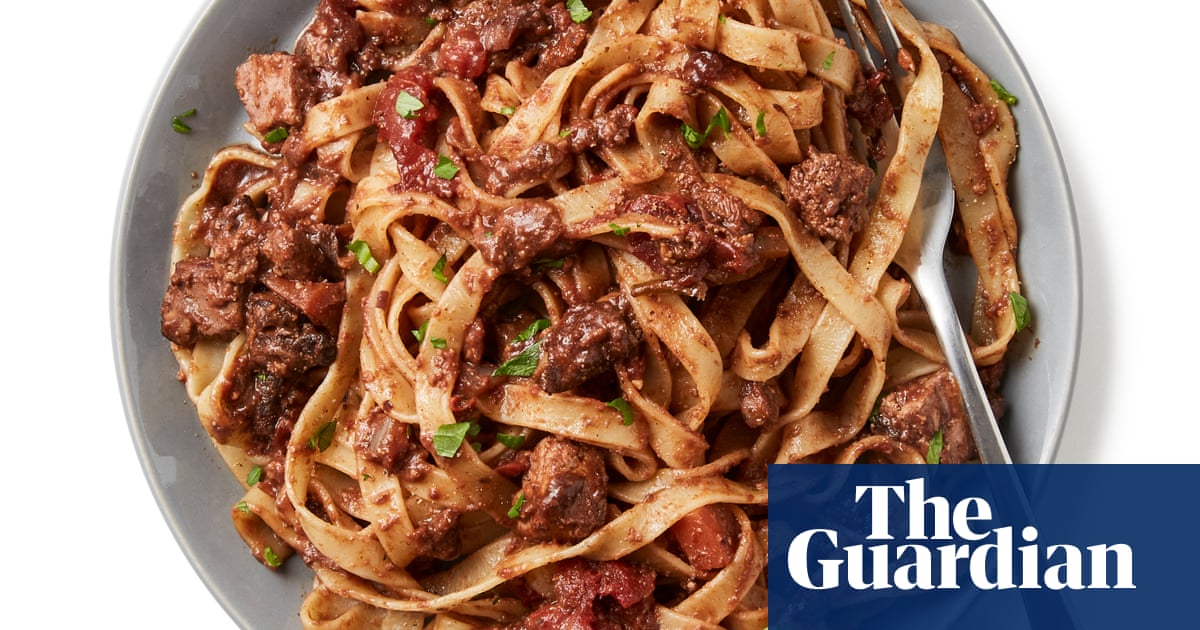
Cakes without eggs? Cheesiness without cheese? As any new vegan knows, the hardest learning curve is replicating the tastes and textures of traditional dishes without animal-derived ingredients.
Luckily, Australia is in a golden age of plant-based cooking. Although veganism has long been practised by many cultures, restaurants and chefs across the country have drastically increased the variety of vegan dishes available lately.
Here, three vegan-food chefs and business owners share their top tips for ‘veganising’ omnivore recipes.
1. Cheesy flavours: use fermented tofu
Lasagne, mac and cheese, bechamel – how to achieve the cheesiness of these comfort foods, minus the actual cheese?
“The old style of thinking with vegan cooking was to just take out the cheese in a recipe. But a dish isn’t complete until it has everything,” says Shannon Martinez of Melbourne’s Smith and Daughters.
When choosing a worthy replacement, she suggests home cooks consider the role cheese plays in a dish. “Is the cheese there to give the salty flavour of feta, for example, or the slightly funky, stronger taste of blue cheese?”
Nutritional yeast has long been a go-to substitute for vegans. But Martinez is not a fan of the flavoured flakes and prefers fermented tofu (sometimes known as fermented bean curd).
“Go to an Asian supermarket, and find a jar,” she says. “It has a very strong smell … but it has the best cheesy flavour, and you only need a small amount.” To replicate the cheesy flavours in a lasagne or mac and cheese, she mashes a little bit of fermented tofu into vegan bechamel sauce.
2. Sweet and savoury recipes: infuse soy milk with aromatics
Soy milk is a common substitute for cow’s milk, but some vegans are not fans of the ‘soy’ taste. Martinez suggests infusing the soy with aromats to “neutralise the flavour”.
“Say I want to make a bechamel sauce, I’ll infuse the soy milk with bay leaves, peppercorns, half a brown onion, some thyme leaves or parsley stalks,” she says.
For sweet recipes, Martinez suggests aromats such as orange zest, cinnamon sticks and cloves: “It just depends on the flavour profile you want.”
Simmer the soy milk with your chosen ingredients, then strain and allow it to cool before adding to your dish.
3. Baking: combine egg replacer with aquafaba and tartaric acid
If you are using store-bought egg replacer for baking, Martinez suggests harnessing the power of aquafaba.
“Usually with egg replacer you’re adding the powder to water and mixing it up. Replace the water with the liquid from a tin of chickpeas – aquafaba – and you’ll get a more fluffy texture, and won’t end up with that awful dense feel you can get sometimes with egg replacer.”
Sacha Joannou from The Green Lion, an online seller of plant-based meals and desserts, says tartaric acid can also boost the fluffiness of egg-free meringues.
“For me, texture is the most important part of cooking, because it’s the first thing you notice when you’re eating, even before flavour,” he says.
“If you’re using aquafaba to make meringue, adding some tartaric acid as a stabiliser can help give it that thick, fluffy texture.”
4. Deep-fried batter: use seasoned rice milk
In deep-fried chicken or fish, egg acts as a binding agent for the batter. But for Tracina Williams of Sydney’s Southern Soul: “We found that we didn’t need egg, because we can use gluten-free flour, or chickpea flour which sticks really easily,” she says.
For the batter, she uses rice milk in place of buttermilk. “Rice milk is thinner than oat milk and soy milk and it has a slight sweetness to it,” says Williams. That sweetness is fundamental to southern food of the United States, which Williams and her mother, Tina, grew up eating in North Carolina.
“The biggest tip when creating a batter using rice milk is to season it first. We always season our rice milk with the spices we want to use before we mix the batter, and that’s really important to make sure the flavour is there.”
5. Plant-based burgers: baste with marinade
Because a lot of supermarket plant-based ‘meats’ aren’t as porous as the real thing, it can be difficult to get flavours to ‘stick’ to them.
Marinades often won’t soak in quite as effectively, says Joannou, but he has developed a good workaround.
“If I’m grilling a plant-based burger, for example, I’ll often create an oil marinade, of say olive oil with garlic, onions, you can put rosemary or ginger – really any flavour that you’re looking for. And then as I’m cooking, I’ll regularly brush the burger with this mixture.”
By repeatedly basting the patty, the flavours don’t just burn off in the first sizzle – they are properly absorbed into the plant-based protein.












